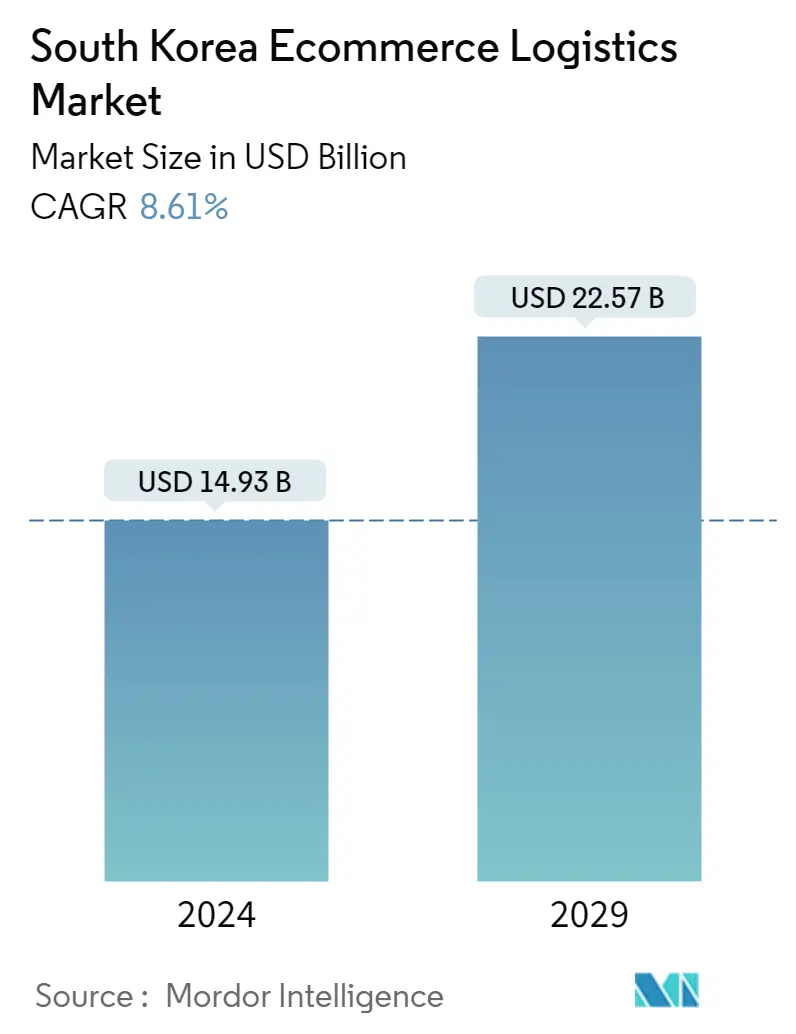Market Size of South Korea Ecommerce Logistics Industry

| Study Period | 2019 - 2029 |
| Base Year For Estimation | 2023 |
| Market Size (2024) | USD 14.93 Billion |
| Market Size (2029) | USD 22.57 Billion |
| CAGR (2024 - 2029) | 8.61 % |
| Market Concentration | Low |
Major Players.webp)
*Disclaimer: Major Players sorted in no particular order |
Need a report that reflects how COVID-19 has impacted this market and its growth?
South Korea Ecommerce Logistics Market Analysis
The South Korea Ecommerce Logistics Market size is estimated at USD 14.93 billion in 2024, and is expected to reach USD 22.57 billion by 2029, growing at a CAGR of 8.61% during the forecast period (2024-2029).
South Korea is in a growing stage and has a moderately fragmented market with around 100+ domestic and foreign players operating in the e-commerce logistics market. CJ Logistics provides integrated transportation and logistics services to individuals and businesses in Korea, covering a wider area than other logistics companies.
Naver, Auction, and G-Market are the leading consumer-to-consumer (C2C) platforms in the Korean e-commerce market. Emerging technologies such as live tracking, automation, WhatsApp bots, AI systems, IoT, and telematics will be major trends leveraged by e-commerce logistics.
As South Korea has a well-developed transportation system, the growing e-commerce sector is expected to eventually create opportunities for intra-urban logistics. Therefore, orders can be easily shipped from one location to another.
The busy consumer lifestyles both partners work in prefer online shopping to waste time traveling from store to store to purchase different products. An online retailer has successfully enabled her to purchase all her needs from one platform, saving consumers a lot of time. Social distancing measures and lockdown enforcement have led to a massive shift to online shopping.
The COVID-19 outbreak prompted most retailers to switch from offline to online (O2O) sales methods. With strong network capabilities, E-Com's logistics companies started partnering with healthcare and food companies for the timely delivery of needed products.
E-commerce players and 3PLs are driving the demand in the logistics market. Third-party logistics accounts for 50.2% of total occupied space, with e-commerce platforms accounting for 24.6%.
The two industries collectively occupy three-quarters of Greater Seoul's leasable logistics space, demonstrating their market dominance. Increased cross-border sales and the growth of online fashion drive the market.
